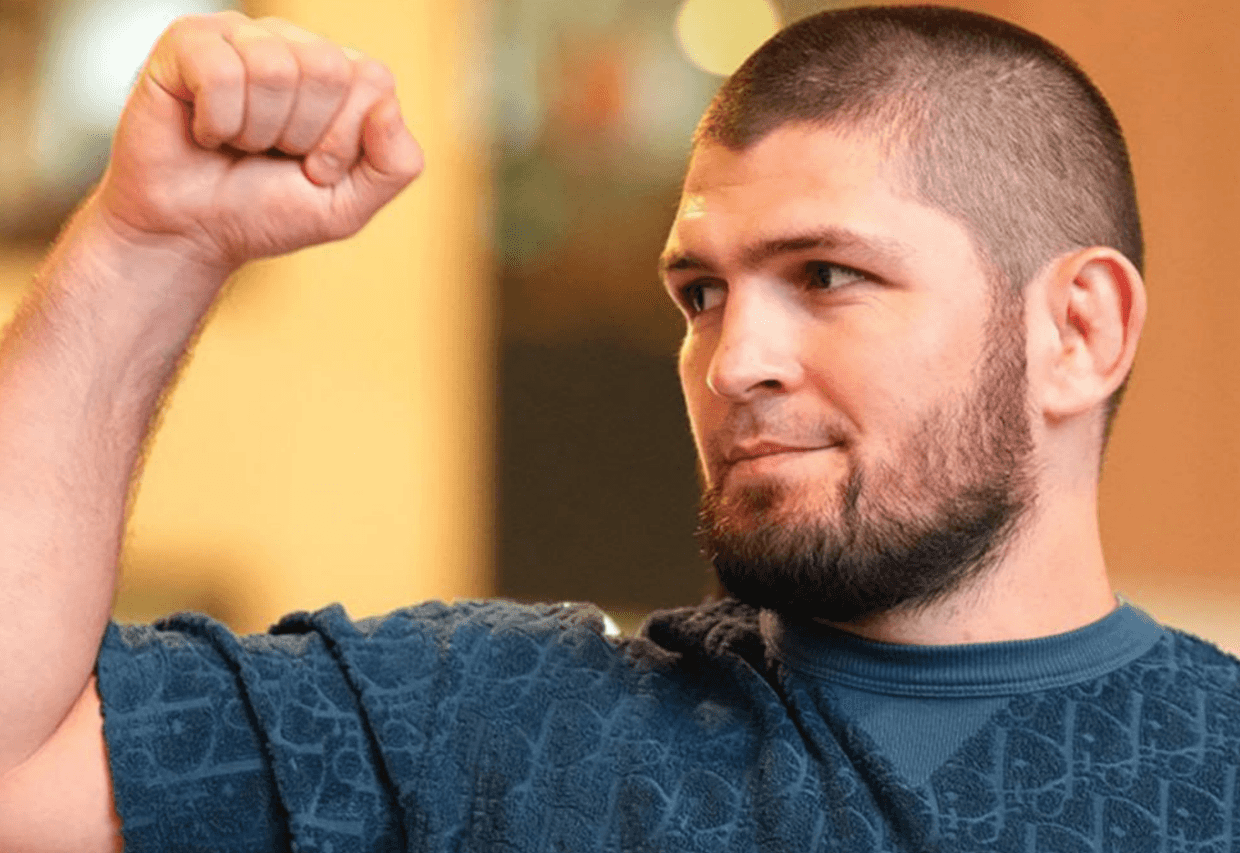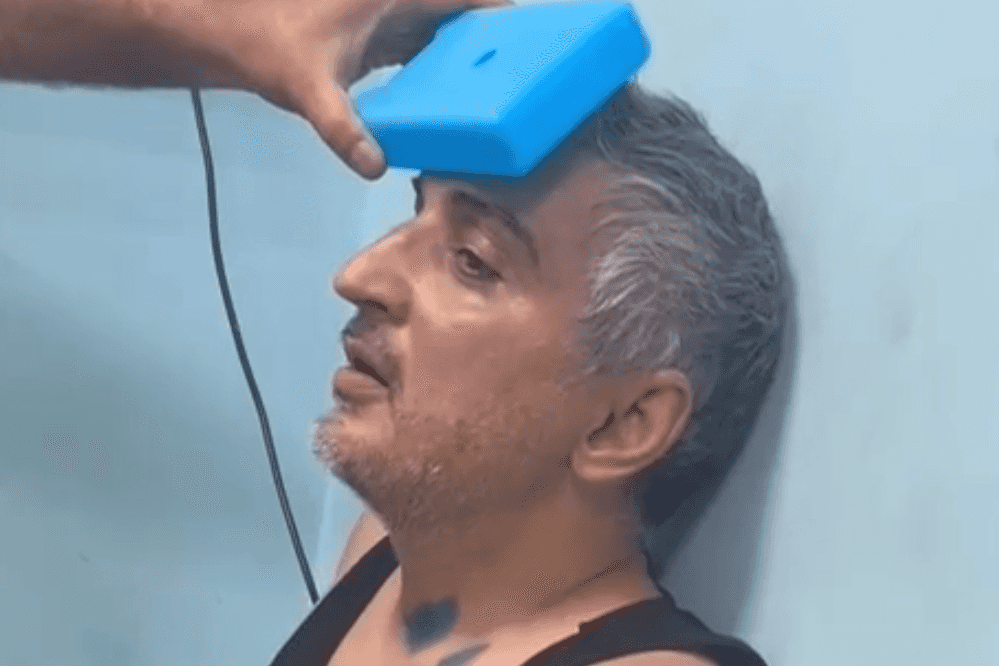
The impact of Russia’s war in Ukraine has been felt keenly in the North Caucasus, despite efforts to hide the number of dead. While some of the thousands were those mobilised last year, others are prisoners who were recruited to fight in exchange for their freedom.
On an overcast day in North Ossetia’s capital of Vladikavkaz, 39-year-old Vitaly Urtayev is being buried.
Funerals in the region are traditionally large, with several hundred people coming to see the deceased off. Urtayev’s is no exception: the dead man’s neighbours are cooking meat in the yard, and the women are setting the table in the khadzar, a structure in the middle of several five-story buildings where weddings and funerals are held. But the circumstances of his death are much less traditional.
‘He was a good guy, well-mannered. He should have lived and lived longer. He worked, helped his family,’ says Giorgiy, a neighbour.
Urtayev was mobilised last autumn, reportedly amongst up to 1,000 men from North Ossetia. The news of their deaths comes almost daily. In Vladikavkaz’s Eastern cemetery, a special plot has been set aside for those killed in Ukraine, but they are running out of room, and this despite the fact that many people bury their sons in their ancestral villages.
‘I can no longer even count how many boys were brought to our village,’ says Aza H. She lives in the village of Tarskoye, half an hour’s drive from Vladikavkaz.
But she tells OC Media that, as far as she knows, all those who left did so voluntarily.
‘Nobody was taken away by force, only mothers were crying’, says Aza.
This is not the case throughout the North Caucasus, however, where some have been forcefully recruited, including the sons of anti-war protesters, and others offered a deal: their freedom from lengthy prison sentences if they survive six months on the front.
Regardless of their path to Ukraine, once dispatched, the whereabouts and wellbeing of these men becomes a fiercely guarded secret. External observers, reporters, family, and friends struggle to identify anything resembling the truth, and receive a concrete answer only once a coffin arrives.
‘You won’t be lucky forever’
As soon as the Wagner private military company announced its involvement in Russia’s invasion of Ukraine, it found an audience of interested potential recruits in the North Caucasus, both amongst those at liberty and amongst men serving lengthy prison sentences.
For many, the salaries on offer made military or mercenary service appealing. The official minimum wage paid to those fighting in Ukraine, whether government or private army, is around ₽200,000 a month ($2,600), with extra pay for destroying enemy equipment or in case of injury.
This is a rare sum for many in the North Caucasus. In Ingushetia’s capital, Nazran, for example, the popular Russian advertising website Avito offers salaries of ₽15,000–₽30,000 ($190–$380) a month, with similar salaries on offer in other cities in the North Caucasus. Government statistics claim that the average salary in the North Caucasus is ₽37,000 ($470), still almost seven times less than the minimum official income of fighters in Ukraine.
Some also feel that the mercenary group offers them better odds than conventional military service.
‘I was not involved in the first wave [of mobilisation]’, says Igor, who moved to Krasnodar Krai from North Ossetia several years ago.
‘I was lucky. But you won’t be lucky forever, will you? I have no chronic illnesses, no children, I served in the army. That’s why I wrote to Wagner, to get hired there.’
Igor states that he is certain that there will be both a second and third wave of mobilisation, and claims that Wagner has better equipment than the Russian army and issues salaries on time.
‘I had already arranged everything, was going to go to their base, but something made me hesitate at the last moment. I’ll wait until my birthday [in June], and if nothing ends before then I’ll probably go’, says Igor.
Freedom for fighting
For others, their choice is a little different.
In the summer of 2022, it came to light that the head of Wagner, Yevgeny Prigozhin, had been personally visiting prisons to recruit convicts. The deal was simple: six months service on the front line, in exchange for freedom.
There were no legal grounds for this deal: not only is the establishment of private military companies against Russian law, but the right to pardon prisoners is only available to Russia’s president.
But Prigozhin is known to have close ties to Russia’s president, and the group has gained notoriety for its involvement, and perpetration of human rights abuses in conflicts from Syria to South Sudan. Those ties have carried Wagner to the frontlines in Ukraine, where, according to the UK Defence Ministry, their 50,000 fighters became ‘a key component’ of Russia’s invasion.
Speaking in January, US National Security Spokesperson John Kirby claimed that approximately 80% of those fighters were recruited from prisons.
The crimes for which Wagner fighters were previously convicted most often become known only after their deaths, when local authorities publish obituaries describing the deceased as ‘heroes’.
[Read more on OC Media: Wagner convict arrested for murder of man with disabilities in South Ossetia]
Oleg Dzarakhokhov, for example, died in Ukraine in November 2022. In 2016, he was sentenced to 19 years in prison on charges including murder, leading a criminal gang, and involvement in a criminal association suspected of killing politicians and businessmen in the Caucasus and Moscow. One conviction was for organising a shooting at the funeral of businessman Alan Torchinov in Beslan, in June 2013.
Sergei Kadatsky similarly died in Ukraine in November 2022, and was awarded a posthumous medal ‘for courage’. Four years earlier, he shot at a car carrying his ex-wife and father-in-law on a major road in the Rostov region, killing his ex–wife and severely injuring her father. Kadatsky tried to avoid punishment for the crime, describing it as a crime of passion, but was sentenced to 15 years in prison.
And in mid-January, news came to Krasnodar of the death in Ukraine of Wagner mercenary Alexander Sitavichus. He had been sentenced in 2019 to 21 years in prison for a triple murder — after a conflict in a provincial cafe, he returned there with an assault rifle, shot a person at the cafe, the cafe’s DJ, and an 18-year-old stranger in a car outside.
News of mercenary deaths comes in sporadically, with each making public the recruitment of these individuals; a process otherwise kept under wraps. And making clear too that those individuals that do survive, stand to receive a hero’s welcome on their return, regardless of the crimes that led to their incarceration.
An unknown quantity
The exact number of Russians killed in Ukraine is unknown, with official and independent figures differing wildly.
Russia’s defence ministry last provided an official total in September 2022, when it claimed 5,937 deaths since the start of Russia’s invasion of Ukraine. The defence ministry also acknowledged the deaths of 89 servicemen in shelling in Makiivka, Donestk, on the night of 1 January 2023, taking the total officially announced death toll to around 6,000.
Ukraine’s estimates of Russia’s losses have consistently been significantly higher. On 22 March, the Ukrainian Defence Ministry put the death toll at 168,000, and on 15 May, at 199,000. Western intelligence agencies have also given estimates at least an order of magnitude higher than those of Russia, with Britain’s Ministry of Defence in February estimating that 40,000–60,000 Russians had been killed in Ukraine.
Both Western and independent Russian sources have also suggested that many, particularly those recruited from prisons, are sent to the frontlines with little to no training and poor equipment, with some recruits claiming they were being sent as cannon fodder.
The Russian independent publication Mediazona, together with the BBC‘s Russian service, has been keeping a name-by-name list of Russians confirmed to have been killed fighting in Ukraine. As of 5 May, it contained 22,055 people.
A similar list, but only for the North Caucasus, is being kept by RFE/RL, compiled on the basis of condolences from district administrations, articles in social networks by relatives of those killed, and reports from their own sources. As of 14 May it listed the names of 3,370 killed from the North Caucasus, of whom local authorities had reportedly recognised around 1,551.
The largest proportion of the dead — around 560 — were from Daghestan. It has reportedly had the highest total death toll of all Russian regions since the early days of the Russian invasion.
North Ossetia is one of the smaller regions of Russia, both in terms of area and population. However, at least 200 ‘cargo 200’ shipments — military terminology for zinc coffins containing the bodies of soldiers — have reportedly returned to the region.
It is not known what percentage of those who are sent to the front come back alive and healthy; this information is not published in the Russian media. The number of those who voluntarily signed up to fight also remains unknown. And the friends and relatives of those who leave are left navigating the dark, hoping that their loved ones will return while expecting the worst.
Aza recalls the words of a neighbour whose son died in Ukraine.
‘She told me that [before she had news of his death] she dreamed that her son came to her and said they would never see each other again. Don’t wait up for me, I love you very much and all that, take care of the little ones’, says Aza.
‘She was knocked down, she couldn’t get hold of him, she couldn’t get hold of him. And only in the autumn it turned out that he was killed a long time ago. There was almost nothing left to bury. Sometimes she asks me, what if it wasn’t him? What if he was a prisoner? And she no longer dreams about him.’







